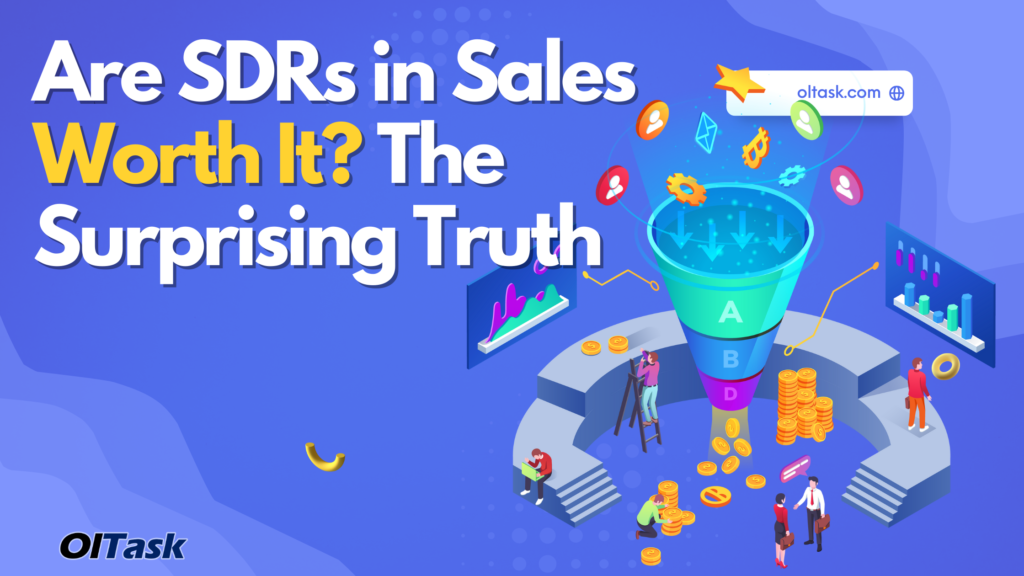In today's competitive business landscape, the role of a Sales Development Representative (SDR) has become more crucial than ever. SDRs serve as the backbone of revenue generation, bridging the gap between marketing and sales teams. Their ability to identify qualified leads, nurture relationships, and convert prospects into paying customers directly impacts a company's bottom line.
As businesses continue to evolve, the demand for skilled SDRs is on the rise. Companies are increasingly recognizing the importance of building strong sales pipelines, and SDRs play a pivotal role in this process. This article aims to provide comprehensive insights into the world of sales SDR, offering actionable strategies and expert advice to help you excel in this dynamic field.
Whether you're a seasoned SDR looking to refine your skills or a newcomer eager to learn the ropes, this guide will equip you with the knowledge and tools necessary to succeed. Let's dive into the intricacies of sales SDR and uncover the secrets to becoming a top performer in this profession.
Read also:Spiderman Video Sophie A Comprehensive Guide To The Viral Sensation
Table of Contents
- What is an SDR?
- Key Responsibilities of an SDR
- Skills Needed to Excel as an SDR
- Effective Strategies for Sales SDRs
- Key Metrics to Measure SDR Performance
- Technology and Tools for SDRs
- Common Challenges Faced by SDRs
- Overcoming Obstacles in the SDR Role
- Future Trends in Sales SDR
- Conclusion and Call to Action
What is an SDR?
A Sales Development Representative (SDR) is a specialized sales professional responsible for identifying and nurturing potential leads. SDRs act as the first point of contact between a company and its prospects, laying the groundwork for successful sales cycles. Their primary goal is to convert cold leads into qualified opportunities for the sales team.
SDRs typically focus on outbound prospecting, leveraging various channels such as phone calls, emails, and social media to engage with potential customers. By qualifying leads and setting up meetings, SDRs ensure that the sales team can focus on closing deals rather than hunting for prospects.
In the modern sales ecosystem, SDRs are essential for driving revenue growth and maintaining a steady flow of qualified leads. Their ability to adapt to changing market conditions and adopt innovative techniques makes them indispensable assets to any organization.
Why SDRs Are Critical for Business Growth
- SDRs help generate high-quality leads that align with business objectives.
- They streamline the sales process by filtering out unqualified prospects.
- SDRs contribute to building long-term customer relationships through consistent engagement.
Key Responsibilities of an SDR
As a Sales Development Representative, your role involves a variety of tasks that contribute to the overall success of the sales process. Below are the primary responsibilities of an SDR:
Lead Qualification
One of the most important duties of an SDR is qualifying leads. This involves assessing whether a prospect meets the company's ideal customer profile (ICP) and determining their level of interest in the product or service. Lead qualification ensures that only the most promising opportunities are passed on to the sales team.
Read also:Noodlemagazi E Your Ultimate Source For Culinary Adventures
Prospecting
Prospecting is another critical responsibility of an SDR. This involves identifying potential customers through research and outreach efforts. Effective prospecting requires a deep understanding of the target market and the ability to craft compelling messages that resonate with prospects.
Scheduling Meetings
Once a lead has been qualified, SDRs are responsible for scheduling meetings with the appropriate stakeholders. This step is crucial in moving the sales process forward and setting the stage for a successful deal closure.
Skills Needed to Excel as an SDR
To succeed as an SDR, you need a combination of hard and soft skills that enable you to perform your duties effectively. Below are some of the key skills required for this role:
Communication Skills
Strong communication skills are essential for SDRs, as they spend a significant amount of time interacting with prospects. Whether it's writing persuasive emails or delivering engaging phone calls, the ability to communicate clearly and convincingly is paramount.
Time Management
Effective time management is crucial for SDRs, who often juggle multiple tasks and priorities. Being able to prioritize activities and allocate time efficiently can significantly improve productivity and results.
Resilience and Adaptability
Rejection is a common part of an SDR's job, and the ability to bounce back from setbacks is vital for long-term success. Additionally, SDRs must be adaptable to changing market conditions and willing to embrace new technologies and strategies.
Effective Strategies for Sales SDRs
To maximize your effectiveness as an SDR, it's important to adopt proven strategies that enhance your performance. Below are some strategies that can help you succeed in this role:
Personalization
Personalizing your outreach efforts can significantly increase the likelihood of engaging with prospects. Tailoring your messages to address specific pain points and interests of each lead can make a lasting impression and improve response rates.
Multi-Channel Approach
Using a combination of communication channels such as email, phone, and social media can enhance your ability to connect with prospects. A multi-channel approach increases the chances of reaching your target audience and building meaningful relationships.
Data-Driven Decision Making
Leveraging data and analytics can help SDRs make informed decisions about their prospecting efforts. By analyzing key metrics and trends, SDRs can refine their strategies and focus on the most effective tactics.
Key Metrics to Measure SDR Performance
Tracking the right metrics is essential for evaluating the effectiveness of an SDR. Below are some key performance indicators (KPIs) that can help measure SDR success:
Lead Conversion Rate
This metric measures the percentage of leads that are successfully converted into qualified opportunities. A high conversion rate indicates that the SDR is effectively identifying and nurturing promising leads.
Average Deal Size
Understanding the average deal size associated with leads generated by SDRs can provide valuable insights into their contribution to revenue growth. Larger deals typically result in higher returns on investment for the company.
Response Rate
The response rate reflects the percentage of prospects who engage with SDR outreach efforts. A higher response rate suggests that the SDR's messages are resonating with their target audience.
Technology and Tools for SDRs
In today's digital age, SDRs rely on various technologies and tools to enhance their productivity and effectiveness. Below are some of the most popular tools used by SDRs:
CRM Systems
Customer Relationship Management (CRM) systems such as Salesforce and HubSpot enable SDRs to manage leads, track interactions, and collaborate with the sales team. These platforms provide valuable insights into customer behavior and help streamline the sales process.
Outreach Automation
Automation tools like Outreach and Gong allow SDRs to streamline their outreach efforts and focus on high-impact activities. These tools can automate repetitive tasks such as email follow-ups and meeting scheduling, freeing up time for more strategic activities.
Social Selling Platforms
Social media platforms like LinkedIn offer powerful tools for SDRs to connect with prospects and build relationships. By leveraging social selling techniques, SDRs can expand their reach and engage with a wider audience.
Common Challenges Faced by SDRs
Despite the many opportunities available to SDRs, the role also presents several challenges. Below are some of the most common obstacles SDRs encounter:
Rejection and Burnout
Dealing with rejection on a regular basis can be discouraging and lead to burnout. SDRs must develop resilience and maintain a positive mindset to overcome these challenges.
Changing Market Conditions
The rapidly evolving business landscape requires SDRs to stay updated on industry trends and adapt their strategies accordingly. Keeping pace with market changes can be challenging but is essential for long-term success.
Competition for Attention
In today's crowded marketplace, capturing the attention of busy prospects is increasingly difficult. SDRs must find creative ways to stand out and make their messages heard above the noise.
Overcoming Obstacles in the SDR Role
To thrive as an SDR, it's important to develop strategies for overcoming common obstacles. Below are some tips for addressing these challenges:
Building Resilience
Practicing mindfulness and maintaining a growth mindset can help SDRs build resilience and cope with rejection. Engaging in regular self-reflection and seeking feedback from peers can also contribute to personal and professional development.
Continuous Learning
Staying informed about industry trends and best practices is crucial for SDRs. Attending webinars, reading industry publications, and participating in professional development programs can enhance your knowledge and skills.
Collaboration and Networking
Building strong relationships with colleagues and industry peers can provide valuable support and insights. Collaborating with other SDRs and sales professionals can help you learn new techniques and overcome common challenges.
Future Trends in Sales SDR
The field of sales SDR is constantly evolving, with new technologies and strategies emerging to enhance productivity and effectiveness. Below are some future trends that are likely to shape the role of SDRs:
Artificial Intelligence
AI-powered tools are increasingly being used to automate routine tasks and provide data-driven insights. These technologies can help SDRs focus on high-value activities and improve their overall performance.
Personalization at Scale
Advances in data analytics and machine learning are enabling SDRs to personalize their outreach efforts at scale. By leveraging these technologies, SDRs can deliver highly targeted messages that resonate with individual prospects.
Remote Work and Virtual Selling
The rise of remote work and virtual selling has transformed the way SDRs interact with prospects. Embracing digital communication tools and adapting to remote work environments will be key to success in the future.
Conclusion and Call to Action
In conclusion, the role of a Sales Development Representative (SDR) is vital for driving revenue growth and ensuring a steady flow of qualified leads. By mastering key skills, adopting effective strategies, and leveraging cutting-edge technologies, SDRs can achieve remarkable success in this dynamic field.
We encourage you to take action by implementing the strategies outlined in this article and continuously refining your approach. Share your thoughts and experiences in the comments section below, and don't hesitate to explore other resources on our website to further enhance your knowledge and skills. Together, let's elevate the standards of sales SDR and achieve new heights in business performance!


